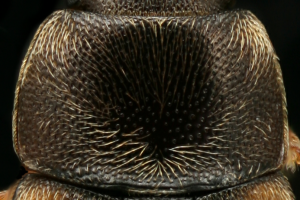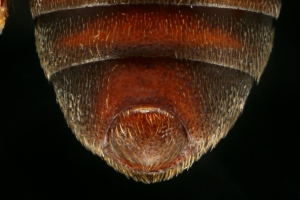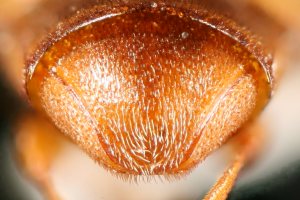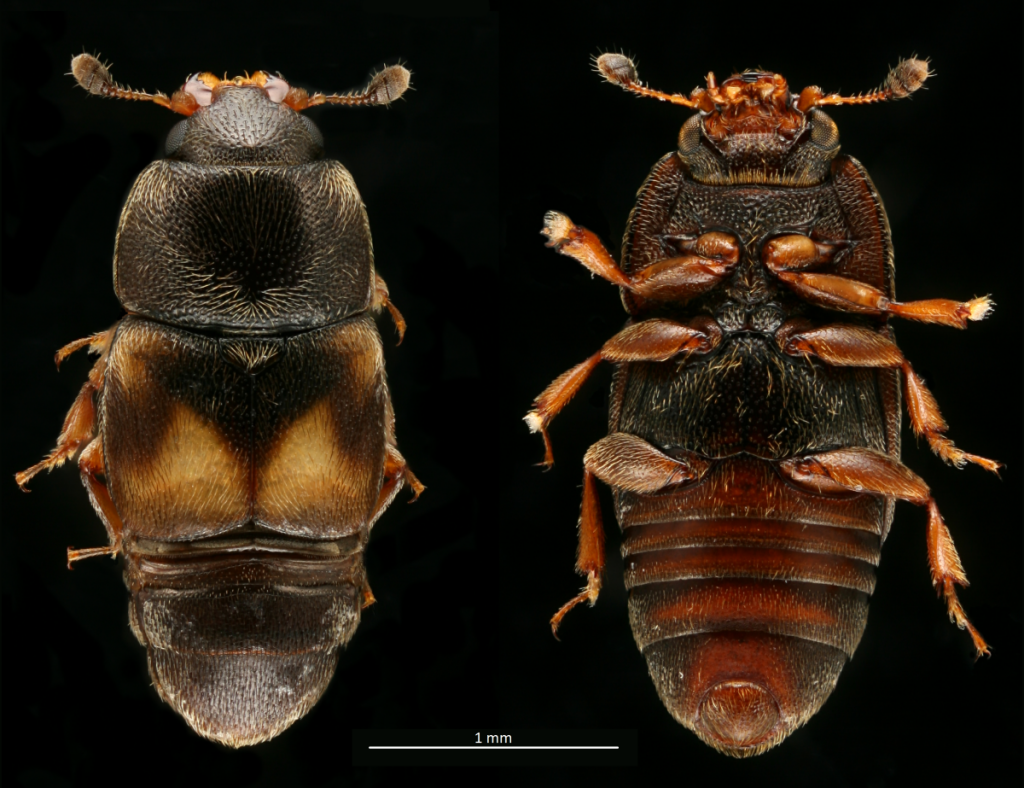Species Fact Sheet
Carpophilus hemipterus (Linnaeus, 1758)
Diagnosis: Carpophilus hemipterus specimens are distinguished from other eastern North American species by having elytra bearing pattern with conspicuous yellowish humeral and apical patches (Fig. 1), the posterior rim of the mesocoxal cavity being crenulate and not forming an axillary space (Fig. 4), and mesosternum bearing anterior impunctate edges along with a median longitudinal ridge (Fig. 3).
Note: The elytra pattern may be less conspicuous in some adults.
Distribution: Carpophilus hemipterus is a cosmopolitan species. Thought to be native to Asia, it is now spread to every continent. Widespread throughout the US.
Biology: C. hemipterus can be found feeding on a wide variety of fruits and vegetables which are over ripened or damaged. It generally does not attack developing fruit except for ripening figs which it will infest through the eye (Connell 1956). It has also been reported as a pest of canneries and stored products (Schmidt 1935). Develops from egg to adult in 32 days at 24°C (Connell 1956). Larvae illustrated by Connell (1956).
References:
Connell WA (1956) – larvae and adult descriptions, key to larvae and adults, and development rates
Denux O, Zagatti P (2010) – distribution
Schmidt CT (1935) – feeding habits
Double-click on images to enlarge

Figure 2. Pronotum (dorsal view)

Figure 3. Mesosternum anterior impunctate edge along with median longitudinal ridge (ventral view)

Figure 4. Posterior rim of mesocoxal cavities, crenulate (ventral view)

Figure 5. Male metathoracic tibia shape, gradually dilated apically (anterior view)

Figure 6. Male pygidium (dorsoposterior view)

Figure 7. Male supplementary segment (ventral view)

Figure 8. Female pygidium apex (posterior view)
HOW TO CITE THIS WORK:
DiLorenzo, C.L., G.S. Powell, A.R. Cline, and J.V. McHugh (2021) Carpophiline-ID, a taxonomic web resource for the identification of Carpophilinae (Nitidulidae) of eastern North America. (vers. 01.19.2021) University of Georgia, retrieved from https://site.caes.uga.edu/carpophiline-id/
